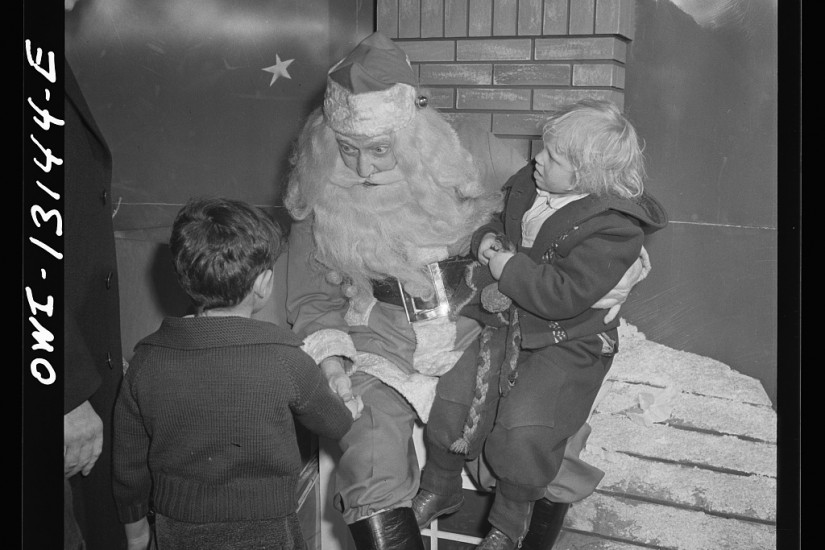The Second World War saw American women break into many male-dominated jobs: riveters, crane operators, cab drivers, and professional baseball players, to name a few.
But perhaps the most unusual breakthrough of all occurred 75 years ago this Christmas, when department stores began hiring women to play Santa, sitting in thrones previously monopolized by men. Pretty soon, still more women in red Santa suits and matching hats could be seen ringing bells on street corners and ho-ho-ho-ing it up for charity.
Even before the U.S. officially entered the war, some astute observers saw it coming. “It is customary in wartime for women to take over numerous fields of employment conventionally reserved for men,” the St. Louis Star-Times noted in 1941. But while the paper conceded that First Lady Eleanor Roosevelt might be right that a “woman’s place is in the office, factory, courtroom, marketplace, corner filling station, and other locations too numerous to mention,” it drew a line in the snow at Santa.
“There is one male domain, however, that should be defended at all costs,” it insisted. “A woman Santa Claus? Heaven forbid! That would be stretching the credulity of guileless little children too far.”
Women had already found some success in the Santa trade. Filene’s in Boston hired a Mrs. Claus to help its male Santa entertain young visitors as early as 1906, a time when the notion that he even had a spouse was relatively new and little publicized. (She seems to have made her first appearance in an 1849 short story, according to Mental Floss.)
Charlie Howard, a department store Santa who also trained other practitioners, gave the concept a boost in 1937, when he announced that his program had gone co-ed.
